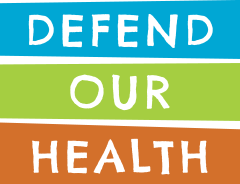What’s in your fish?
June 30, 2021 | Safe Food, Safe Water, Toxic-Free Products | Tags: Fishing, Maine CDC, Methylmercury, Penobscot Nation, Toxins
Fishing is one of the most popular outdoor recreational activities in the nation, and if you happen to live in Maine, you have thousands of miles of rivers and streams and hundreds of freshwater lakes at your disposal to drop your line. For nearly 40 million Americans, fishing represents an important connection to nature, a meditative experience, and a valuable source of food.
Yet, what many people don’t know is that our freshwater, and the fish that live in them, are loaded with toxic contamination from industrial discharge, wastewater, and runoff. Subsistence fishing — traditionally a reliable, cheap, sustainable, and healthy source of fats and protein — is now fraught with threats to human health and development. In fact, Maine fish are so polluted that guidelines from the Maine CDC say that pregnant women and young children should not consume any inland fish. For others, the CDC recommends no more than two meals of inland fish a month!
Most at risk are pregnant women and children in communities that rely on fish as an important part of their diets. Among them are the Penobscot Nation, whose culture, traditions, and sustenance are enmeshed with the Penobscot River and its watershed. To have such an important food source ruined is a horrible blow to Maine communities.
Worse, the CDC guidelines on fishing limits only tell part of the story. Currently, the Maine CDC publicly advises limits on fish consumption due to high levels of one particular toxin called methylmercury, which harms the nervous system. But the actual situation is much worse.
Toxins found in Maine fish include not only methylmercury but also known carcinogens like PCBs, dioxins, PBDEs and pesticides in the DDT family. PFAS (a group of chemicals that harm the immune system and cause some cancers) has been found in some Maine waters at dangerously high levels in popular game fish like brook trout and smallmouth bass. But fishers never hear about these contaminants, since they are not currently listed on the Maine CDC advisory. The CDC says that since restrictions on fish consumption are already tight due to high levels of methylmercury, adding information on other contaminants like PFAS is unnecessary. But we think the public has a right to know what’s in their fish!
These toxins have no place in our environment, our bodies, or our fish. But it doesn’t have to be this way, and it’s why we’re committed to the fight for environmental health. We’re pushing Maine to be more transparent about contaminants in our water. We work with our partners to push retailers and fast food chains to remove products that release harmful chemicals into the environment. We’ve advocated for bold and rapid state action tackling PFAS contamination. And we’re continuing to fight for federal chemical safety reform. So that someday, fishing can again be healthy, safe, summer fun for everyone.
Safe fishing checklist:
- Check safety limits before fishing. Consult Maine CDC guidelines and the Penobscot Nation fish advisory health and safety information, including how often it’s safe to eat freshwater fish at different Maine locations, but keep in mind that the CDC guidelines are incomplete.
- Eat low on the food chain. Some toxins bioaccumulate in fish, meaning that larger, older, predatory fish have higher toxin levels that build up in their bodies from the smaller fish they consume over time.
- Stay informed and become an advocate by joining our mailing list, or donate today to join our fight for cleaner water and safe fish!
